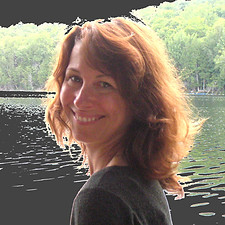Kitchipogte/Richibouctou
Big fire
Artists
Nathalie Daigle
Peter Clement
Richibouctou
Where you could find the most powerful Mi’kmaq tribe of the Maritimes who carried the war against the English up to Cape Breton.
Richibouctou, river in fire; when the sun is reflecting on it. Some will say: KITCHIPOGTEO meaning: The big fire. For others it’s Lichibucto: river going into the woods.
A little bit of history. We talk about the Basque and their red sails, who, from 1523, came in to get whale oil. As for Cartier, in 1534, he talks about the Bay of Richibouctou and the one of Kouchobouguac in his log. There was a certain Borjin from Ireland who described these shores around 1620. Then in 1660, the missionary Ducreux wrote in Latin Regibuctuii and a map published in Paris in 1661 indicates Richibouctou. As for Nicolas Denys, he mentions the name of Rechibouctou in 1672.
Don’t forget the Jesuites who established in the 17th century, the mission Saint-Antoine de Padoue in Richibouctou-Village.
There is still an island situated at the mouth of the Gaspareau River known as Rivière à la pirogue that was also named Richibouctou. And Louis d’Amours, Sieur de Chauffours had an attachment on the lands of the Kouchibouguac River up to Cocagne. In 1682, he had built a Fort and two small houses in Richibouctou-Village. When he was around, the Mi’kmaqs guarding the Fort, celebrated and feasted.
In 1783, there was the creation of the reserve of Indian Island and then the one of Big Cove approved in 1802. It is said that in those times, Joseph Gueguen of Cocagne acted as an interpreter for some disputes between the Amerindians and the English of Richibouctou.
We talk about industrialization from the beginning of the 19th century before the shipbuilding of the transatlantic. In the summer of 1853, 254 boats came in.
So many dates to remember, above all the return of the Acadians in 1787 and we also have to mention that a Prime Minister of N.-B, Pierre Veniot, an Acadian was born.
The arrival of the Loyalists happened about ten years later: Scottish, Irish, and English. Richibouctou became then Liverpool – town of the Yellow Submarine of the Beatles – Richibouctou got his name back in 1832. We talk about religious effervescence as can be seen from many churches: Catholic, Anglican, Methodist, and Presbyterian Not far, Richibouctou village, an Eden carved by the ocean and the cans of lobsters wrapped up with verses of the Bible that talked about paradise or the Last Judgment.
Richibouctou and her twin sister Rexton celebrate at the scallop’s festival with the band Les revenants, not to mention the beer of Alexander Keith; he was in this village before becoming a rich brewer.
Richibouctou where we have to look for the treasure of the De Grasse when the sun is reflecting on the water and the gold flows.


Nathalie Daigle
Gore, Qc.
Nathalie Daigle lives in Gore, Quebec. She is a painter and has participated in the Atlantic Visual Arts Festival's Live Creation Challenge on several occasions. Her favourite theme is nature.
The work she created for the exhibition Irreducibles Racines is inspired by the Mi'kmaq origin of the name "Richibouctou" and means "great fire" or "river of fire" in Mi'kmaq.
For the exhibition, she created a striking painting, as much by the spontaneous use of primary colors as by the lyrical movement that emerges from it.
The work unfolds like a flaming stained glass window in an irreducible movement carried by the movement of a wave. Or is it rather a land gradually transforming into a boat of light?


Peter Clement
First Nation
Big Cove, N.B.
Peter Clement is a visual artist from Big Cove First Nation. He has worked in his community as an artist for many years. His work has been recognized throughout various Mi'kmaq communities, and his work can be found in many private collections.
For the exhibition Irréductibles racines, the artist is associated with the name "Richibouctou".

